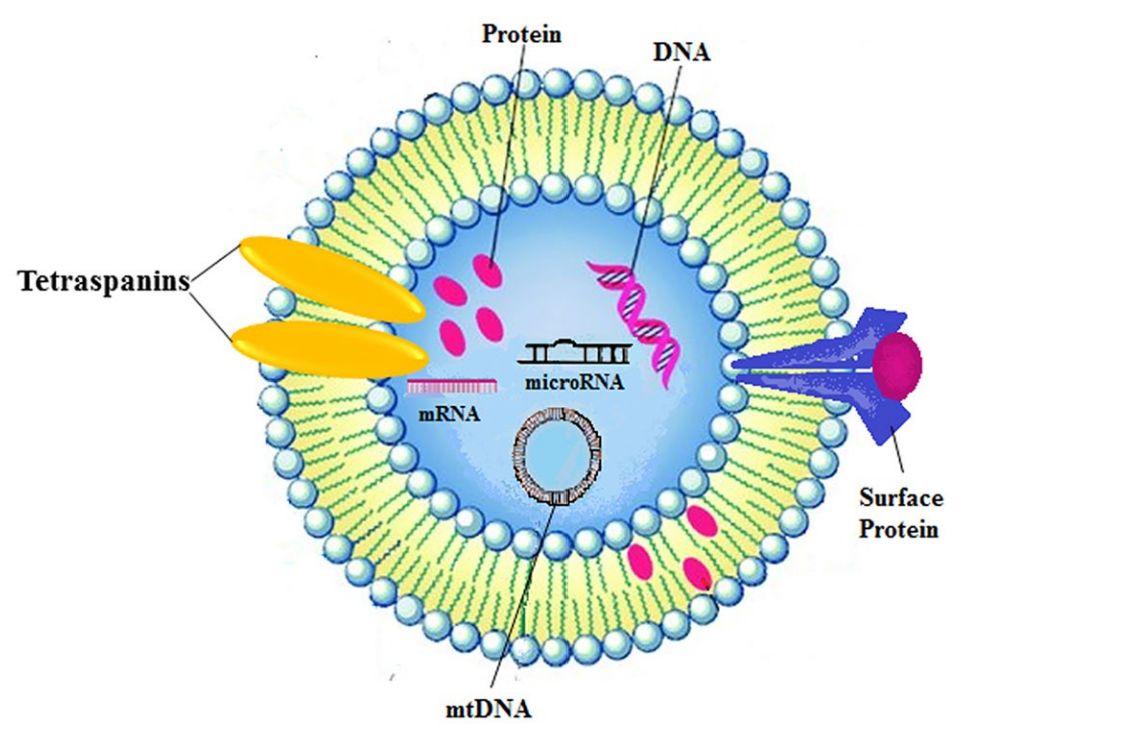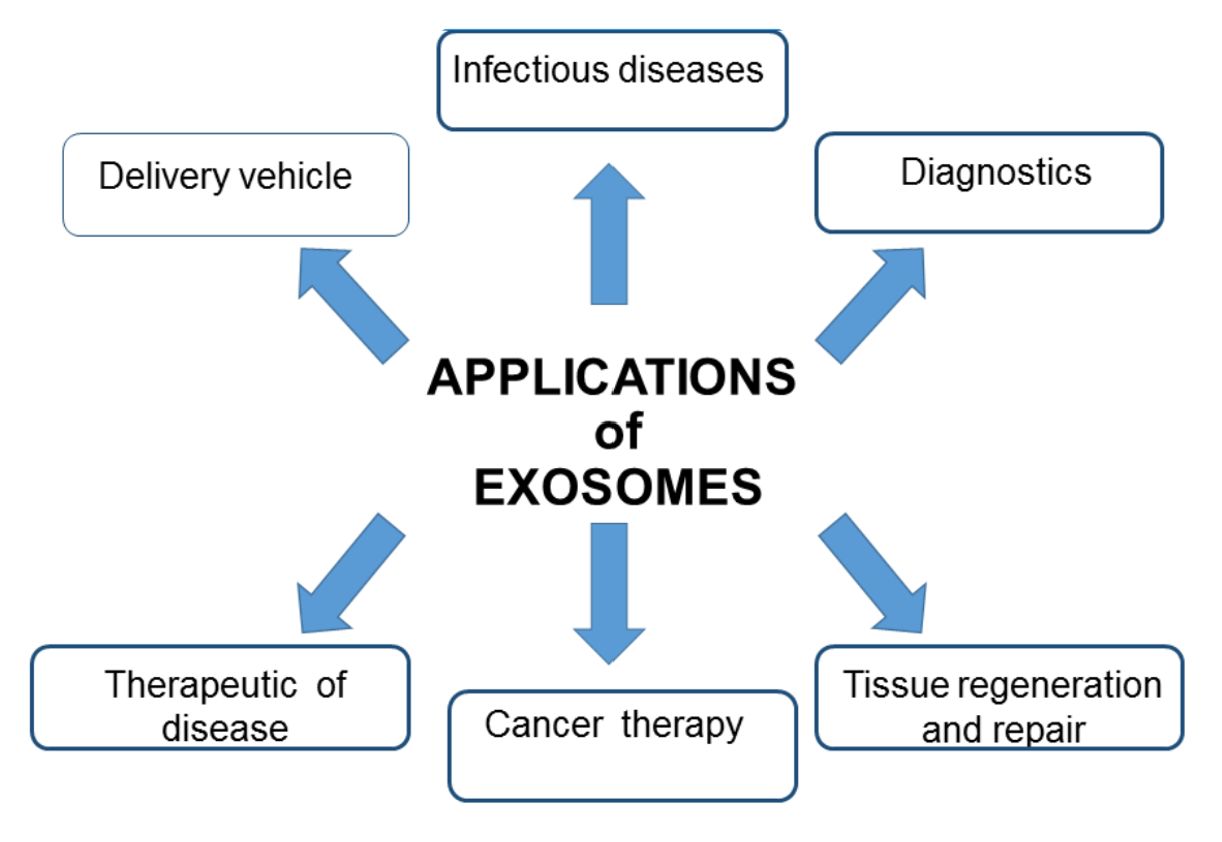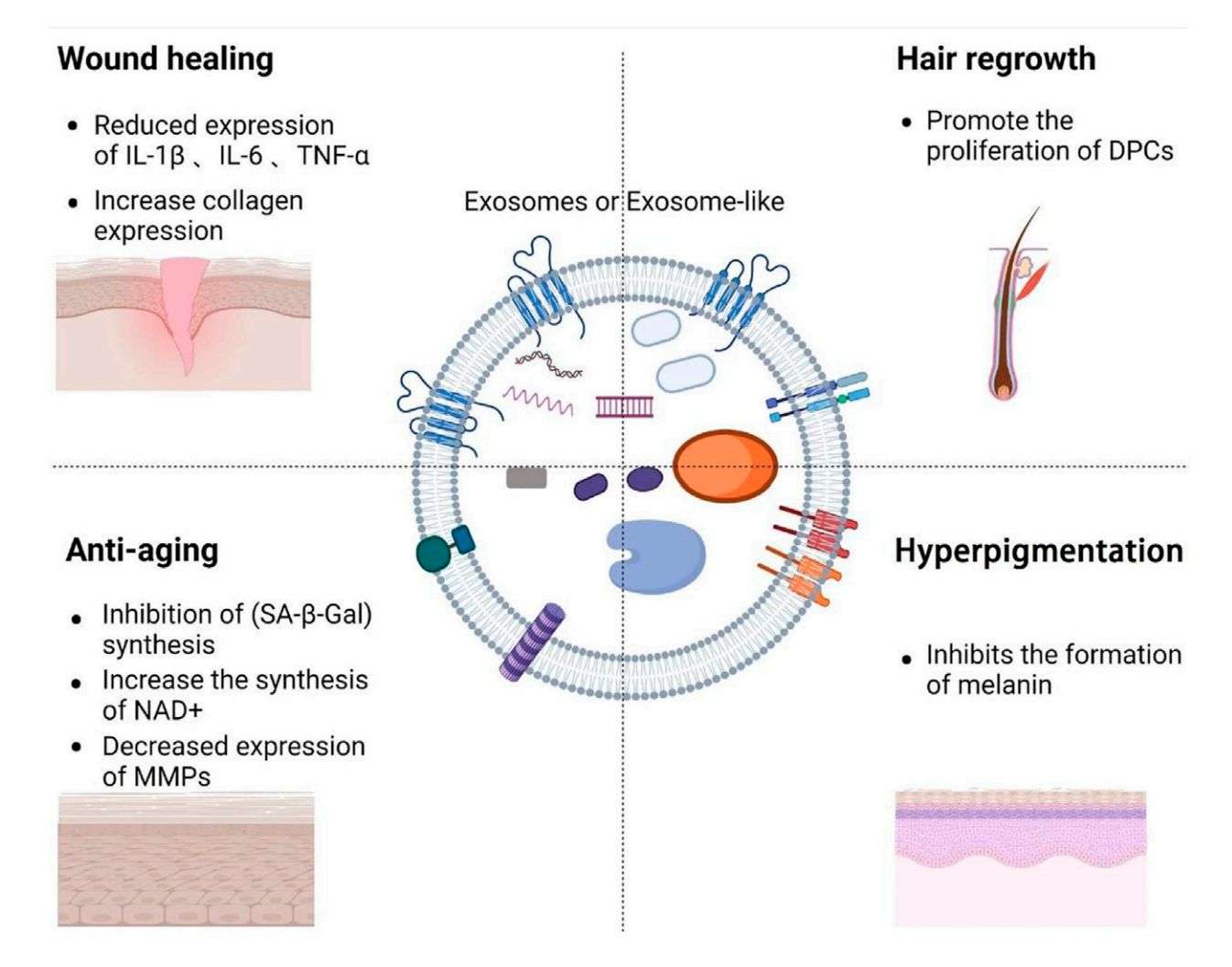Exosome Technology
Creative Biostructure has focused on the development of cutting-edge exosome technologies for many years, offering a wide range of exosome products and services. Our advanced exosome technology platforms are expertly designed to provide end-to-end solutions including exosome isolation, characterization, engineering, and full functional analysis. Our research team is dedicated to innovating and refining exosome methodologies to satisfy the diverse requirements of clients, ensuring high-quality results, and facilitating groundbreaking research in the field of exosomes.
What are Exosomes?
Exosomes are a class of extracellular vesicles 30-150nm in size that is, typically, secreted into the extracellular environment by various cell types. Exosomes are crucial in intercellular communication by transporting biologically active molecules such as proteins, lipids, and RNA. This function is critical in many physiological and pathological processes, including immune responses, neural communication, and the progression of diseases such as cancer. Due to the natural role in transmitting molecular information and the ability to mediate precise biological effects, exosomes have gained great interest in the fields of diagnostics, therapeutics, and drug delivery carriers.
 Figure 1. The structure and content of exosome. (Jafari A, et al., 2021)
Figure 1. The structure and content of exosome. (Jafari A, et al., 2021)
Why Study Exosomes?
Exosome research has far-reaching implications in science and medicine.
- Disease Diagnosis: Because of carrying biological information from donor cells, exosomes can be used as biomarkers for a variety of diseases, including cancer, cardiovascular disease, and neurodegenerative diseases.
- Therapeutic Potential: Exosomes can be engineered to carry RNA, proteins, or other therapeutic agents for direct delivery to target cells to improve therapeutic efficacy.
- Understanding Cellular Communication: The study of exosomes provides a deeper understanding of cellular communication and the signaling pathways involved. It is critical to understanding fundamental biological processes and how exosomes contribute to disease progression.
- Regenerative Medicine: Exosomes play a role in tissue repair and regeneration by promoting cell proliferation and differentiation, and have potential applications in regenerative therapy of damaged tissues and organs.
 Figure 2. Some of the major uses of exosomes in clinical development. (Di Bella MA, 2022)
Figure 2. Some of the major uses of exosomes in clinical development. (Di Bella MA, 2022)
General Workflow for Exosome Research
1. Exosome isolation
2. Exosome characterization
3. Molecular analysis
4. Functional analysis
5. Exosome engineering
How to Isolate Exosome?
Isolation and purification of exosomes is a critical challenge in developing translational tools. The first step in research is to distinguish exosomes from other extracellular vesicle populations. Creative Biostructure has developed a variety of exosome isolation methods based on exosome size, density, surface charge, and proteins associated with their surfaces, notably differential ultracentrifugation (dUC), size exclusion chromatography (SEC), polymer precipitation, density gradient centrifugation (DGC), immunoaffinity (IA) microfluidics (MF), and ultrafiltration (UF). Simultaneously with isolation and purification, we also increase exosome production through a range of advanced techniques.
How to Characterize Exosomes?
Characterization is critical to understanding the biological function of exosomes and ensuring their quality and purity for research and clinical applications. We provide researchers with state-of-the-art exosome characterization techniques, including transmission electron microscopy (TEM), nanoparticle tracking analysis (NTA), dynamic light scattering (DLS), atomic force microscopy (AFM), flow cytometry, and tunable resistance pulse sensing (TRPS).
Exosome Analysis
We advance exosome research by providing a robust suite of exosome tracking and multi-omics technology solutions. Our cutting-edge technology platform is designed to provide clients with comprehensive support for exosome analysis. Utilizing our multi-omics and tracking capabilities, clients can gain a deeper understanding of exosome contents, function, and dynamics, thereby accelerating the research and development process.
 Figure 3. Multi-omics analysis of exosomes. (Chitoiu L, et al., 2020)
Figure 3. Multi-omics analysis of exosomes. (Chitoiu L, et al., 2020)
Tracking is the process of monitoring and following the trajectory of exosomes in a biological system. We use markers or dyes to label the exosomes and then visualize the movement and distribution of the exosomes in real time using advanced imaging techniques such as fluorescence imaging, bioluminescence imaging, nuclear imaging, magnetic resonance imaging, photoacoustic imaging, and computed tomography.
To gain a deeper understanding of exosome biology and accelerate the use of these extracellular vesicles in diagnostic or therapeutic applications, Creative Biostructure offers sensitive and reproducible multi-omics technologies for exosome analysis.
Exosome Engineering
Creative Biostructure specializes in cutting-edge exosome engineering services to revolutionize drug delivery systems. Our expertise includes exosome labeling, targeted modification, and advanced drug delivery technologies using exosomes. Exosomes can be engineered as transport vectors to deliver therapeutic agents directly to diseased cells, increasing therapeutic efficacy and reducing side effects.
 Figure 4. Schematic of exosome engineering modifications. (Peng X, et al., 2023)
Figure 4. Schematic of exosome engineering modifications. (Peng X, et al., 2023)
Exosome labeling helps to track and identify these extracellular vesicles in biological systems. We attach lipophilic dyes, gold nanoparticles (GNPs), near-infrared (NIR) fluorescent probes, radioisotopes, or membrane-permeable compound tracers to exosomes, which helps researchers to scrutinize the biodistribution, cellular targeting, therapeutic potential, and their role in cell-to-cell communication.
High biocompatibility, high stability, target specificity, low toxicity, and low immunogenicity make exosomes very promising for drug delivery. Exosomes can be used to deliver ASO, siRNA, miRNA, mRNA, lncRNA, proteins, and small molecule drugs. We provide exosome loading and target modification technologies to accelerate the development of exosome-based drug delivery systems.
Exosomes for Diagnosis and Treatment of Diseases
Exosomes are important components of the organism's microenvironment. Compared with traditional biomarkers, exosomes have the advantages of breadth, stability, and modifiability, and can better reflect the state of the organism. Therefore, exosomes have become a new tool for the prediction, diagnosis, and assessment of cancer and chronic diseases.
What is the Efficacy of Exosomes in Medical Aesthetics?
In recent years, exosomes have been discussed in functional skincare, anti-wrinkle, anti-aging, regenerative, and restorative medical aesthetics programs.
 Figure 5. Overview of exosomes in medical aesthetics. (Zhang B, et al., 2022)
Figure 5. Overview of exosomes in medical aesthetics. (Zhang B, et al., 2022)
- High Absorption for Repair and Regeneration
Due to the nanometer size, exosomes are easily absorbed by cells, which can transport and deliver therapeutic substances and growth factors to specific cells or tissues, promote cell repair and regeneration, and accelerate the recovery of damaged tissues.
- Gene Regulation of Aging Process
Nucleic acid molecules in exosomes, such as mRNA and microRNA, can be transported to the target cells, regulating gene expression, affecting cell function and the aging process.
- Regulate Inflammation and Oxidative Damage
Exosomes can regulate the inflammatory response and reduce inflammatory damage, which helps to maintain tissue health and slow down the aging process. In addition, exosomes contain antioxidant substances that can neutralize free radicals, reduce oxidative stress, and protect cells from oxidative damage.
In addition to providing comprehensive and efficient exosome services, Creative Biostructure offers high-quality exosome products that can be delivered globally. Our products can be directly used for characterization, analysis, and in vitro and in vivo functional assays to help clients further explore the potential applications of exosomes.
Creative Biostructure is very pleased to be your professional partner in the field of exosomes and is willing to provide first-class exosome products and services. Please feel free to contact us for a detailed quote.
References
- Jafari A, et al. Exosomes and cancer: from molecular mechanisms to clinical applications. Med Oncol. 2021. 38(4): 45.
- Di Bella MA. Overview and Update on Extracellular Vesicles: Considerations on Exosomes and Their Application in Modern Medicine. Biology. 2022. 11(6): 804.
- Chitoiu L, et al. Multi-Omics Data Integration in Extracellular Vesicle Biology—Utopia or Future Reality? International Journal of Molecular Sciences. 2020. 21(22): 8550.
- Peng X, et al. Potential in exosome-based targeted nano-drugs and delivery vehicles for posterior ocular disease treatment: from barriers to therapeutic application. Mol Cell Biochem. Published online July 4, 2023.
- Zhang B, et al. Exosomes based advancements for application in medical aesthetics. Front Bioeng Biotechnol. 2022. 10: 1083640.
- Wang X, et al. Recent progress in exosome research: isolation, characterization and clinical applications. Cancer Gene Ther. 2023. 30(8): 1051-1065.
- Huang L, et al. Research Advances of Engineered Exosomes as Drug Delivery Carrier. ACS Omega. 2023. 8(46): 43374-43387.
